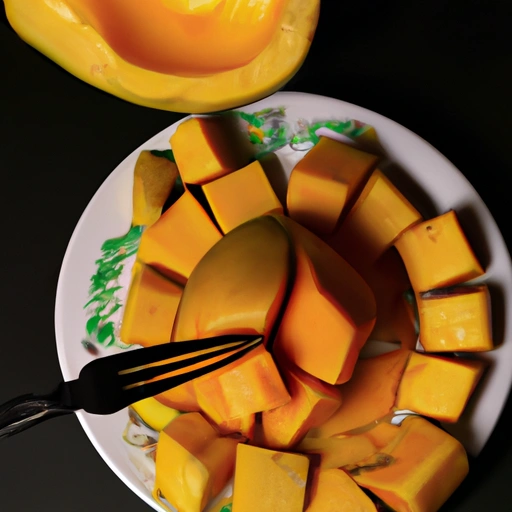Mango
Description

Mangoes are a tropical stone fruit prized for their sweet, juicy flavor and rich nutritional profile. Originating from South Asia, these luscious fruits have spread across the globe, becoming one of the most beloved ingredients in a variety of cuisines. Mangoes come in different shapes, sizes, and colors, including yellow, orange, red, and green. When ripe, their flesh is typically golden-yellow and can be either fibrous or smooth and buttery, depending on the variety.
Common uses
Mangoes are widely consumed fresh but are also used in a variety of culinary preparations. They can be eaten as a snack, pureed into smoothies, or used in desserts like cakes, sorbets, and ice creams. Mangoes also appear in savory dishes such as salsas, salads, and as a flavor enhancer in sauces and marinades.
Nutritional value
Calories
A typical mango, weighing around 200 grams (7 oz), provides approximately 150 kcal (calories).
Protein
Mangoes contain about 1 to 2 grams of protein per medium-sized fruit.
Fat
Mangoes are low in fat, with less than 1 gram per serving.
Carbohydrates
There are roughly 35 grams of carbohydrates in one medium-sized mango, with about 30 grams of that being natural sugars.
Vitamins
This fruit is an excellent source of vitamin C, providing nearly the entire recommended daily amount in one serving. It also contains good amounts of vitamin A, essential for eye health.
Minerals
Mangoes offer various minerals including potassium, magnesium, and a small amount of calcium.
Health benefits
Mangoes are not just delicious; they're also packed with antioxidants and nutrients that can bolster health. The high levels of vitamin C help support the immune system, while dietary fiber contributes to digestive health. Their vitamin A content is significant for vision and skin integrity.
Potential risks
As with any food, mangoes can cause adverse reactions in certain individuals, such as those with mango allergy. Due to their sugar content, they should be consumed in moderation by individuals watching their sugar intake, including diabetics.
Common recipes
Mangoes are used in various recipes such as mango salsa, Thai mango salad, mango lassi, mango chutney, and mango sticky rice.
Cooking methods
Mangoes can be enjoyed raw or cooked. Cooking methods include grilling, baking, broiling, and blending into purees.
Pairing with other ingredients
Mangoes pair well with other tropical fruits, coconut, chicken, seafood, chili, and lime. They also complement dairy products like yogurt and cream.
Summary
In summary, mangoes are a versatile and nutritionally rich ingredient suitable for a wide range of dishes. Whether incorporated into sweet or savory recipes, they add a tropical flair and a host of health benefits, making them a favorite among food lovers around the world.